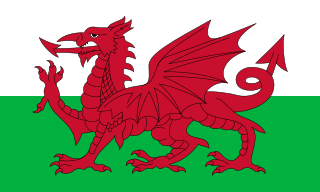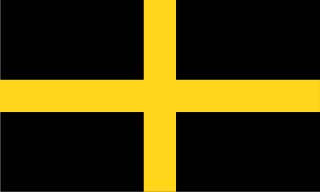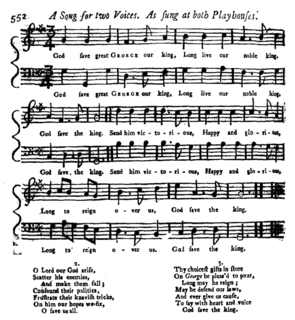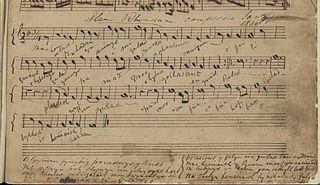 W
WThe national symbols of Wales include a diversity of official and unofficial images and other symbols.
 W
WThe coat of arms of the Prince of Wales is the official heraldic insignia of the Prince of Wales, a title traditionally granted to the heir apparent to the reigning monarch of the United Kingdom of Great Britain and Northern Ireland, formerly the Kingdom of Great Britain and before that the Kingdom of England.
 W
WThe Coronet of Charles, Prince of Wales is a small crown that is part of the Honours of Wales. The gold coronet, with diamonds set in platinum, was made for and used by Prince Charles at his investiture as Prince of Wales in 1969. Designed by the artist Louis Osman, the coronet was a gift from the Worshipful Company of Goldsmiths to the Prince's mother, Queen Elizabeth II. It has been described as modern but its form is traditional. The coronet is on permanent display in the Jewel House at the Tower of London.
 W
WThe Welsh Dragon is a heraldic symbol that appears on the national flag of Wales. The oldest recorded use of the dragon to symbolise Wales is in the Historia Brittonum, written around AD 829, but it is popularly supposed to have been the battle standard of King Arthur and other ancient Celtic leaders. Its association with these leaders, along with other evidence from archaeology, literature, and documentary history, led many to suppose that it evolved from an earlier Romano-British national symbol. During the reigns of the Tudor monarchs, the red dragon was used as a supporter in the English Crown's coat of arms. The red dragon is often seen as symbolising all things Welsh, and is used by many public and private institutions. These include the Welsh Government, Visit Wales, and numerous local authorities including Blaenau Gwent, Cardiff, Carmarthenshire, Rhondda Cynon Taf, Swansea, and sports bodies, including the Sport Wales National Centre, the Football Association of Wales, Wrexham A.F.C., Newport Gwent Dragons, and London Welsh RFC, while the "dragon's tongue" is the symbol of the Welsh Language Society. The Welsh Dragon is also one of The Queen's Beasts.
 W
WThe flag of Saint David is normally a yellow cross on a black field, but it has also appeared as a black cross on a yellow field or with an engrailed cross. It represents the 6th-century Saint David, a Welsh bishop of Menevia and the patron saint of Wales.
 W
WThe Flag of Wales consists of a red dragon passant on a green and white field. As with many heraldic charges, the exact representation of the dragon is not standardised and many renderings exist. The flag is not represented in the Union Flag.
 W
W"God Save the Queen" is the national or royal anthem in most Commonwealth realms, their territories and the British Crown dependencies. The author of the tune is unknown, and it may originate in plainchant; but an attribution to the composer John Bull is sometimes made.
 W
W"Hen Wlad Fy Nhadau" is the unofficial national anthem of Wales. The title, taken from the first words of the song, means "Old Land of My Fathers" in Welsh, usually rendered in English as simply "Land of My Fathers". The words were written by Evan James and the tune composed by his son, James James, both residents of Pontypridd, Glamorgan, in January 1856. The earliest written copy survives and is part of the collections of the National Library of Wales.
 W
WThe leek is a vegetable, a cultivar of Allium ampeloprasum, the broadleaf wild leek. The edible part of the plant is a bundle of leaf sheaths that is sometimes erroneously called a stem or stalk. The genus Allium also contains the onion, garlic, shallot, scallion, chive, and Chinese onion. Three closely related vegetables, elephant garlic, kurrat and Persian leek or tareh, are also cultivars of A. ampeloprasum, although different in their uses as food.
 W
WUrdd Gobaith Cymru is a national voluntary youth organisation, which claimed over 56,000 members in 2019 aged between 8 and 25 years old. It provides opportunities for children and young people across Wales to take part in a range of experiences through the medium of Welsh.
 W
WNarcissus is a genus of predominantly spring flowering perennial plants of the amaryllis family, Amaryllidaceae. Various common names including daffodil, narcissus and jonquil are used to describe all or some members of the genus. Narcissus has conspicuous flowers with six petal-like tepals surmounted by a cup- or trumpet-shaped corona. The flowers are generally white and yellow, with either uniform or contrasting coloured tepals and corona.
 W
WNarcissi are widely celebrated in art and literature. Commonly called daffodil or jonquil, the plant is associated with a number of themes in different cultures, ranging from death to good fortune. Its early blooms are invoked as a symbol of Spring, and associated religious festivals such as Easter, with the Lent lilies or Easter bells amongst its common names. The appearance of the wild flowers in spring is also associated with festivals in many places. While prized for its ornamental value, there is also an ancient cultural association with death, at least for pure white forms.
 W
WThe Flag of Wales consists of a red dragon passant on a green and white field. As with many heraldic charges, the exact representation of the dragon is not standardised and many renderings exist. The flag is not represented in the Union Flag.
 W
WThe Prince of Wales's feathers is the dexter heraldic badge of the Prince of Wales. It consists of three white ostrich feathers encircled by a gold coronet. A ribbon below the coronet bears the Germanic motto Ich dien. As well as being used in royal heraldry, the badge is sometimes used to symbolise Wales, particularly in Welsh rugby union and Welsh regiments of the British Army.
 W
WThis is a list of flags used exclusively in Wales.
 W
WA Royal Badge for Wales was approved in May 2008. It is based on the arms borne by the thirteenth-century Welsh prince Llywelyn the Great, with the addition of St Edward's Crown atop a continuous scroll which, together with a wreath consisting of the plant emblems of the four countries of the United Kingdom, surrounds the shield. The motto which appears on the scroll, PLEIDIOL WYF I'M GWLAD, is taken from the National Anthem of Wales and is also found on the Welsh designs for £1 coins minted from 1985 until 2000. The badge formerly appeared on the covers of Assembly Measures; since the 2011 referendum, it now appears on the cover of Acts passed by the Senedd and its escutcheon, ribbon and motto are depicted on the Welsh Seal.
 W
WThe Welsh National Memorial Park is a war memorial in Langemark near Ypres (Belgium) for soldiers of World War I, located near the Pilkem Ridge in the former Ypres Salient. It commemorates the services of men and women from Welsh origin(Wales), wherever they served during the Great War as part of the Allied Powers, as well as the non-Welsh soldiers serving in Welsh formations.